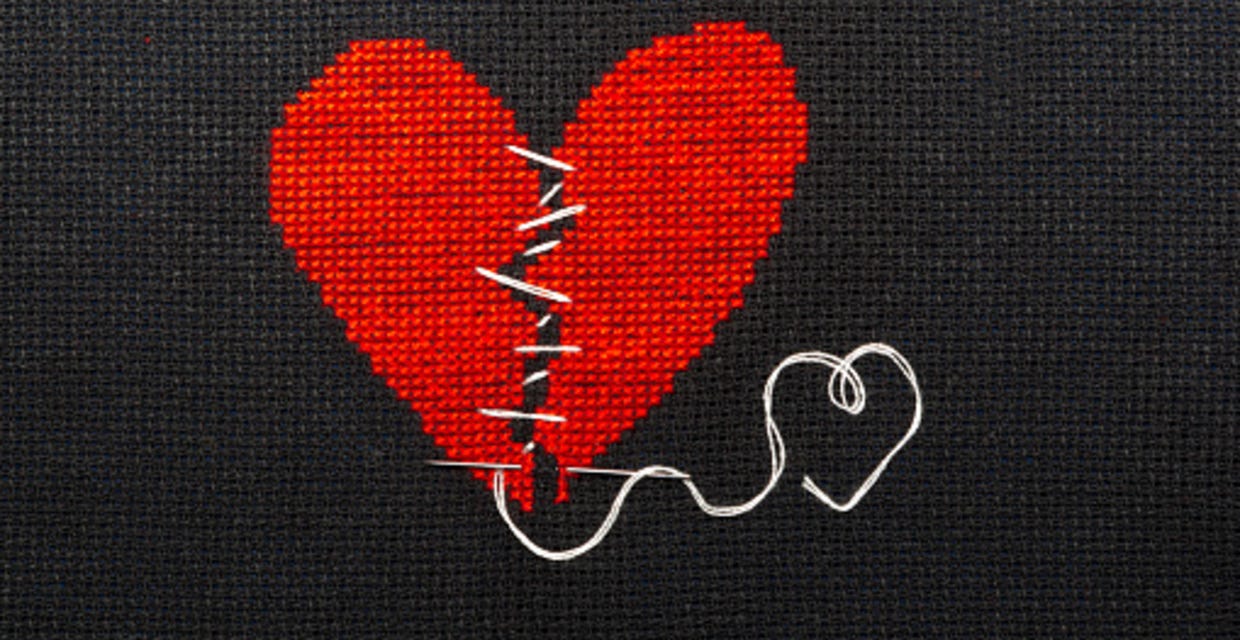By a Thousand Cuts: Complex Trauma
The complexity of diagnosis, treatment, and the healing of a thousand wounds
This is Part 2 of a four-part series on the major trauma- and stressor-related disorders.
It’s not PTSD, it’s CPTSD. C stands for complex. And that should provide a clue as to what to expect of CPTSD: a more complex condition that developed thanks to more complex causes.
Experts disagree as to whether CPTSD should be considered a distinct condition from PTSD, complete with its own diagnosis. Depending on where you are in the world, CPTSD may be recognised and treated, or not recognised, and therefore not treated. Or perhaps misdiagnosed, and not treated effectively.
The International Classification of Diseases (ICD) is the diagnostic manual for mental health conditions used throughout Europe, and is published by the World Health Organization (WHO). The WHO revised the latest edition of the manual (ICD-11) in 2019 to include CPTSD. This means that if you live in Europe, you have a good chance of getting an accurate diagnosis if you meet the criteria.
The Diagnostic and Statistical Manual (DSM) is the equivalent diagnostic manual used here in Australia and in the US, and is published by the American Psychiatric Association (APA). Though a matter of controversy that now spans decades, the APA does not recognise CPTSD as a distinct condition. Instead, the latest edition of the DSM (DSM-5-TR) lists a subtype of PTSD called dissociative PTSD that they claim encompasses CPTSD symptoms.
I’ll admit I disagree with the APA on this one, as my own clinical experience suggests there’s something different going on in CPTSD clients that isn’t fully covered by the PTSD diagnostic criteria. Most colleagues I’ve worked with tend to agree. And the paradigm of trauma-informed care is designed to address the needs of CPTSD survivors as paramount.
What makes it complex?
While PTSD develops following either a one-off traumatic event or a series of traumatic events, CPTSD is the result of chronic trauma. That means the exposure must have been long-term. You can’t get CPTSD from an accident, a natural disaster, or a one-off assault. Examples of chronic trauma include long-term physical or sexual abuse in childhood, long-term domestic violence, war – either as a civilian or as military, torture, slavery, or being a victim of sex trafficking. Exposure events are either prolonged or repetitive, and escape from the situation may be dangerous or literally impossible. Often help is not available, or not accessible, and victims remain trapped for extended periods. The chronic stress endured while toughing out the trauma changes the brain.
In addition to the event/s, CPTSD shares all the classic symptoms of PTSD including:
Intrusions, including re-experiencing in the form of flashbacks or nightmares
Avoidance of places, people, events, or situations related to the trauma
Hypervigilance to the possibility of danger
A pattern of negative thoughts and emotions about the self, others, and the world
But something about the prolonged and repeated nature of the trauma exposure leads to additional symptoms, including:
Excessive reactivity to negative emotional stimuli
This is essentially emotional dysregulation, often characterised by being quick to anger and display aggression. This level of reactivity makes planning and problem-solving extremely challenging. Impulse control may be limited, and frustration tolerance may be low.
Difficulties with identity and sense of self
This tends to present as a negative sense of self, often involving persistent feelings of shame, guilt, failure, and worthlessness. The individual may have porous boundaries as a result, and this may manifest in the form of people-pleasing, trying to fix others, or being vulnerable to exploitation.
Severe difficulty in forming and sustaining meaningful relationships
This may manifest as simply not getting close to people, or it may involve pushing people away when they get too close, or it may take the form of sabotaging relationships. It may also involve subjugating one’s own needs and desires in order to avoid mistreatment or abandonment.
When we examine the sources of CPTSD, it’s not hard to see how these symptoms developed. Prolonged and inescapable interpersonal trauma incurs a death by a thousand cuts, with the individual being devalued, often dehumanised. Add to this the chronic invalidation by others who could intervene and yet do not, or who gaslight the victim into questioning their reality, and you have a powerful recipe for profound distrust, reactivity, and a fragmenting of the self.
Crossing the Borderline
These additional CPTSD symptoms overlap with some of the core symptoms of Borderline Personality Disorder (BPD). And as with the PTSD/CPTSD discussion, there is some debate as to whether the two conditions are actually distinct at all.
It bears repeating that all trauma- and stressor-related disorders have the same top-level requirement: exposure to a traumatic life event. While everyone with CPTSD has been exposed to chronic trauma, this is not the case for BPD. BPD, which tends to emerge in adolescence, is often associated with exposure to childhood trauma, however, so the line gets blurred. But trauma exposure is not a key criterion for BPD like it is for CPTSD, which can emerge at any point in life.
Diagnosis and treatment
Because of the overlap with PTSD and BPD, it can be hard to get a CPTSD diagnosis, particularly if you live in a part of the world where the DSM is the manual used for diagnoses. For this reason, misdiagnosis can occur, and so it’s helpful to stay open to the possibility that a diagnosis of either PTSD or BPD may be inaccurate if the full criteria for CPTSD are met. Second opinions are valuable, and you’re entitled to seek one if you’re unsure.
To treat CPTSD, it’s essential to work with a therapist who specialises in trauma, as the appropriate interventions require specialised training. The first-line treatments for CPTSD, like for PTSD, include a suite of interventions under the umbrella of trauma-focused CBT. Trauma-focused CBT teaches survivors how the body responds to trauma and stress, and how to manage symptoms. It also involves identifying problematic thinking patterns including cognitive distortions. While these thinking patterns are understandable in the context of the trauma exposure, they pose problems in the long term, so treatment involves noticing when you’re stepping into a cognitive trap, and realistic reframing.
Exposure therapy is one of the tools in the trauma-focused CBT toolkit. As with PTSD, avoidance is a key treatment target, as avoidance reinforces the notion that you can’t cope with fear or anxiety when triggered. Exposure therapy helps survivors to gradually engage more and more with anxiety-inducing stimuli and to cope with the anxiety this brings up. It might not make the anxiety fully go away, but it does instil a sense of mastery regarding one’s ability to handle really hard thoughts and feelings.
Cognitive processing therapy (CPT) is another of the tools in the trauma-focused CBT toolkit, and it used for both PTSD and CPTSD. CPT focuses on addressing the distressing and often problematic thoughts and emotions that have developed as a result of trauma exposure. It’s particularly helpful for unpacking and reality-testing some of the gnarlier event-related emotions that eat away at a survivor’s sense of self such as guilt and shame. In most cases, unpacking and reality-testing guilt and shame gradually leads to a major reduction in those feelings, as responsibility gets appropriately and proportionately assigned where it belongs, and the survivor can be freed of an unwarranted burden.
Prognosis and recovery
For many people, CPTSD lingers and there’s no quick fix. It was caused by a thousand cuts, and recovery is a gradual process of healing those thousand cuts. It’s essential that survivors find compassion for themselves in confronting the hard yards of healing.
Along with getting the right therapy from the right therapist, CPTSD survivors need to build a fortress of self-care around themselves to buttress their energy. Regular exercise is an essential component for reducing stress and boosting positive emotions, enabling increased mastery over emotion regulation. Building connections with people you can trust is crucial for developing relationship skills. And part of this process will involve educating those trusted people about the survivor’s experience so they can be mindful of potential triggers and how to help manage them. Attending a support group can also be helpful for connecting with folks who understand and validate the survivor’s experience. And building up a repertoire of self-soothing skills equips the survivor with the means to de-escalate and recharge from even the toughest days en route to recovery.
If we’re to accompany a loved one along their path to recovery, or if we happen to work with, teach, treat, or otherwise interact with a survivor en route to recovery, there are a few things we need to be mindful of. Survivors need to feel safe, and that means we have to foster that sense of safety by empowering, not coddling them. Survivors need to feel they have choice and control over their own lives. Survivors need to be validated when they tell their truth. Survivors need to be empowered to thrive, and that may mean we support their coping with necessary accommodations, not the removal of responsibility. Survivors need others to be consistent and accountable. Survivors need our understanding and empathy when they struggle to self-regulate. And survivors need to have hope in their recovery, so we must help fan the flames of that hope.
The road to recovery is long, winding, and usually non-linear. But with realistic goals, and an abundance of patience and compassion, a survivor can expect to arrive.





